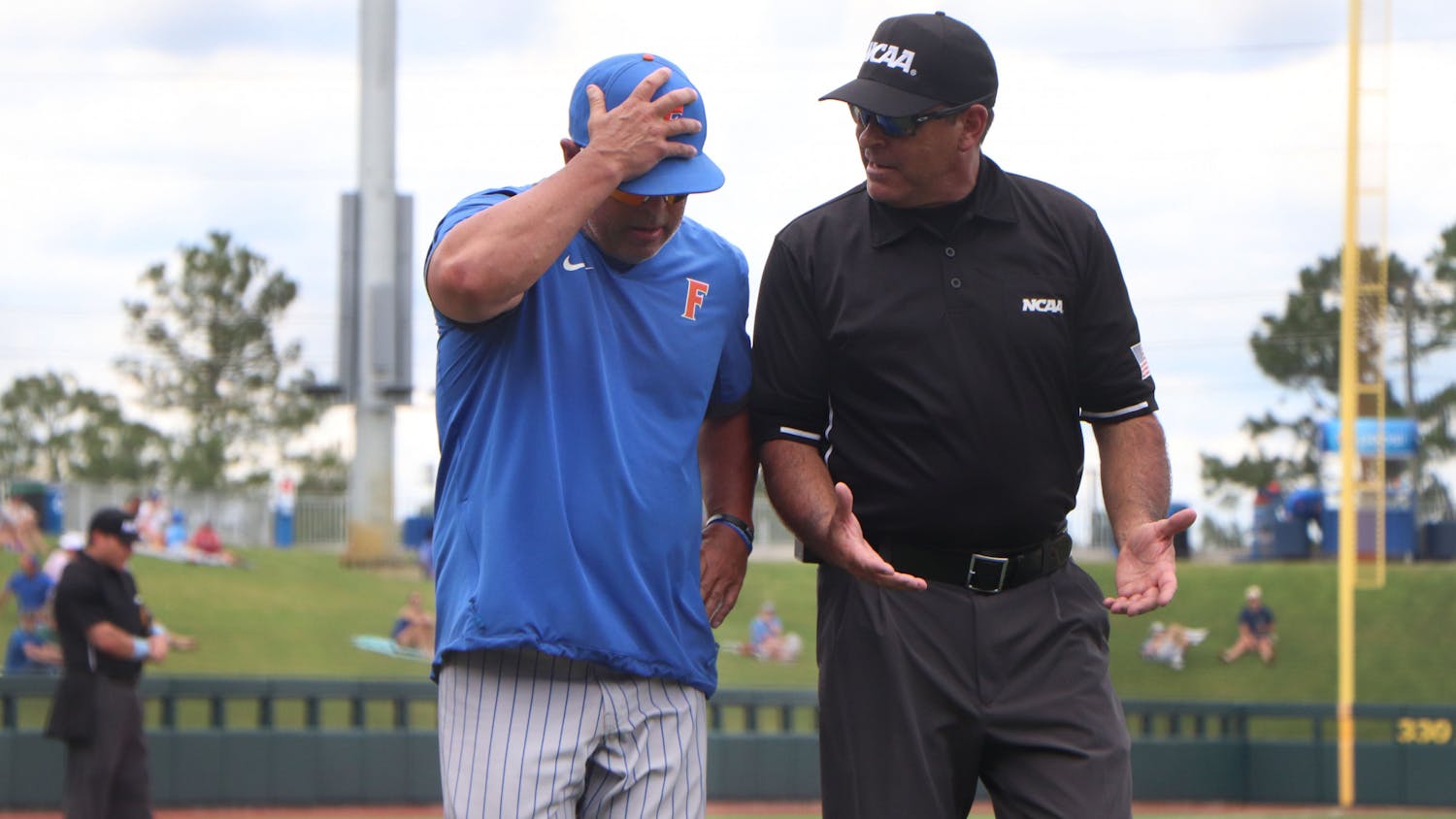Several UF departments are reviewing lab safety policies after two students were injured in separate incidents in the last three months. The second put a graduate student in the hospital.
UF spokeswoman Janine Sikes said hazardous materials teams responded to six incidents — three explosions, two spills and one reported odor — on campus in the last year.
The chemical explosion on Wednesday in Sisler Hall that injured graduate student Khanh Ha, 27, and Gainesville Fire Rescue firefighter Andrew Marsh, 25, is still under investigation, she said.
The chemistry department and UF's Environmental Health and Safety division are working diligently to ensure students' safety in labs and to minimize the risk of accidents, Sikes said.
In October, an explosion caused by a set of chemical reactions surprised the department, said Daniel Talham, chair of the chemistry department.
Last week's explosion, which Talham said was caused by similar reactions, surprised the University Police Department.
"For our agency to respond to two similar incidents involving the same chemical in the same building in three months is fortunately not something that we routinely see," said UPD spokesman Maj. Brad Barber.
In both cases, the reactions involved sodium azide, but Talham said that particular chemical was not necessarily the culprit.
The director of Environmental Health and Safety, William Properzio, said sodium azide is routinely used in labs. He said UF has about 3,000 labs on campus.
Since the October explosion, EHS has worked with the chemistry department to ensure researchers follow safety procedures, he said.
Talham said the safety training done since October mitigated the effects of last week's explosion.
All four people in the lab when the explosion occurred were wearing the right equipment, he said, and they reacted properly.
His department doesn't want to be too critical of the response to the incident, he said, because "we don't want people to be afraid to respond correctly."
The chemistry department is first concerned with student safety and lab clean-up, Talham said, and then the department investigates the incident.
Sisler Hall closed Wednesday night and reopened Friday. On Monday, an outside company removed the remaining hazardous material that hadn't reacted and cleaned the lab where the incident occurred.
The lab reopened Tuesday, Properzio said, but no one is allowed to do experiments there until EHS finishes investigating the incident.
Talham said because Ha is still recovering, the exact cause of the explosion remains unknown.
"We don't want to go bombard him with things he shouldn't be worrying about right now," he said.
Talham said the chemistry department is collaborating with the Dean of Students Office, Office of the Provost, Office of Research and University Police to review procedures for handling potentially dangerous reactions and will continue to do so.
Stephanie Hull, a 20-year-old chemistry junior, said she feels safe in lab because she doesn't work with the same materials as graduate students.
"If I were a grad student," she said, "I might be a little skeptical about how they're going about teaching safety."
Hull plans to apply to UF's chemistry graduate program.
Talham stressed that experiments done on campus are small-scale compared with industrial standards.
"The building won't come crashing down on anyone's head," he said.
However, he said, "one injury is too many."





